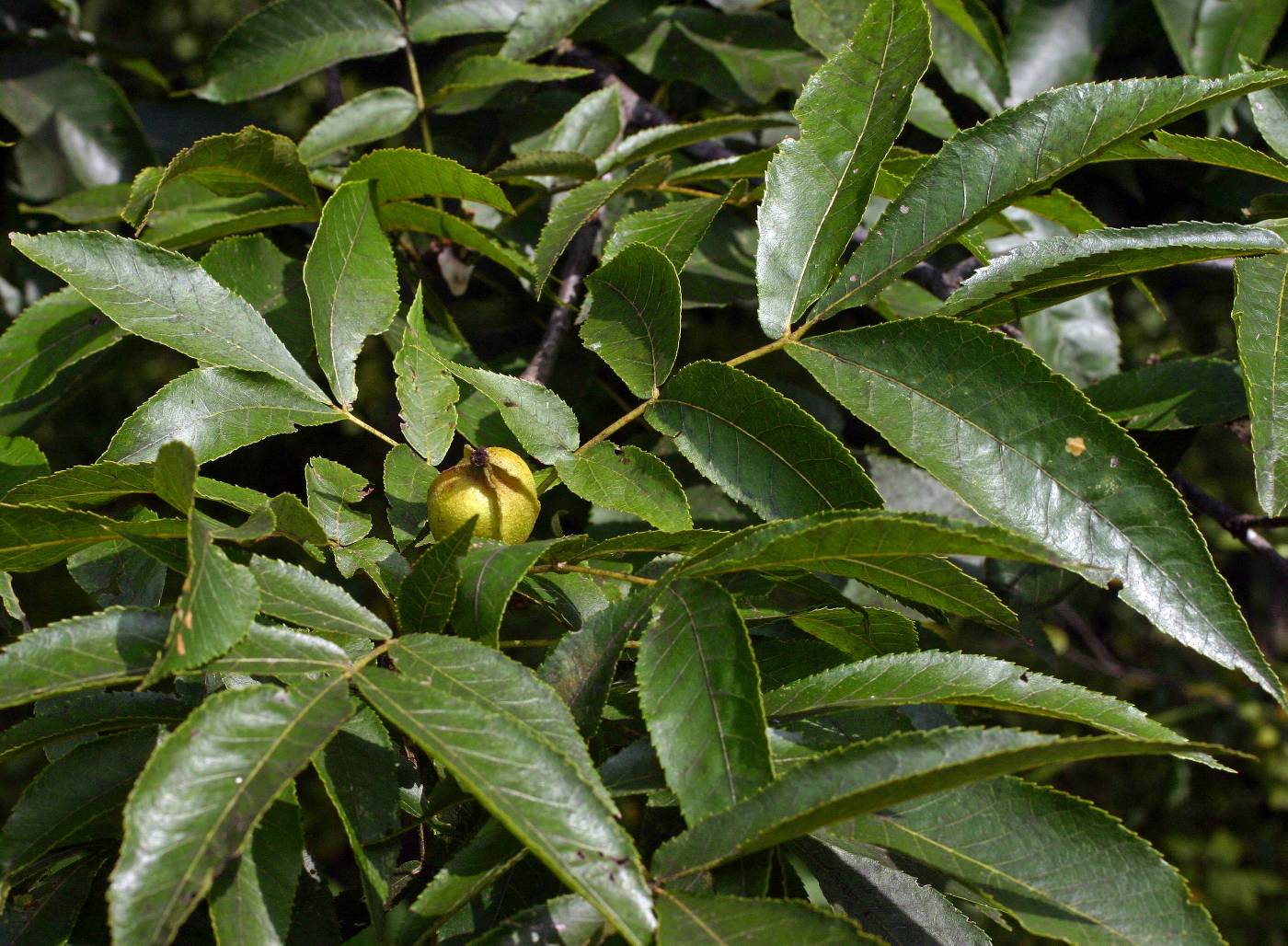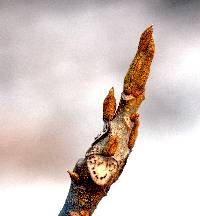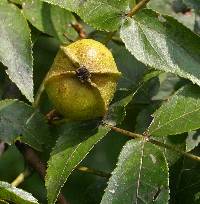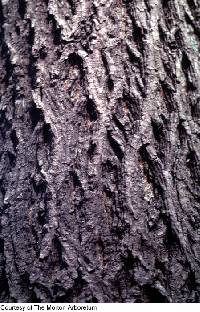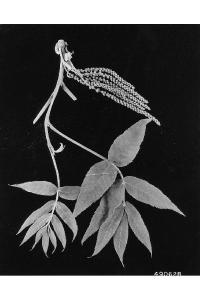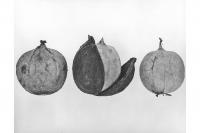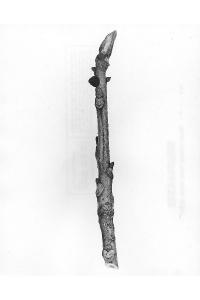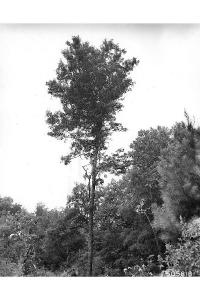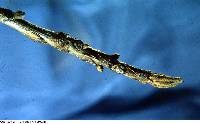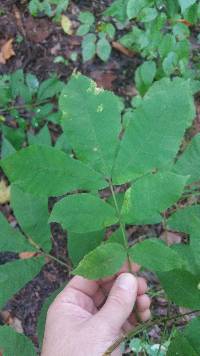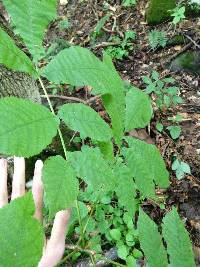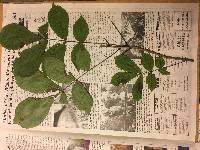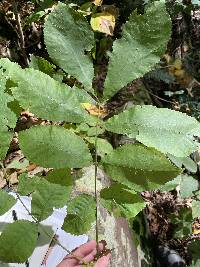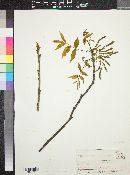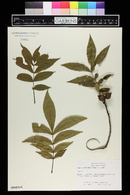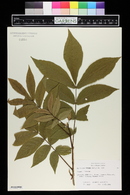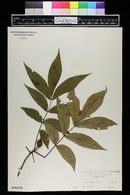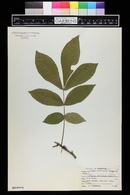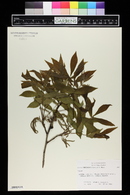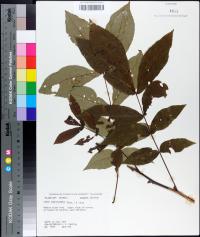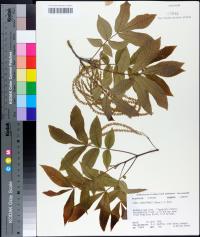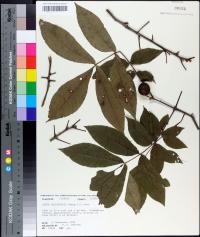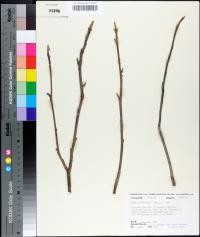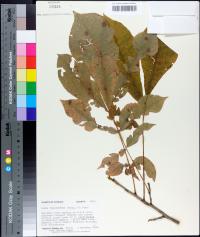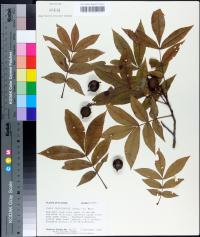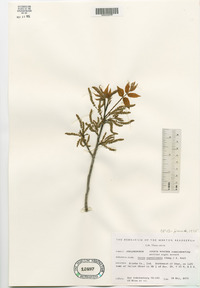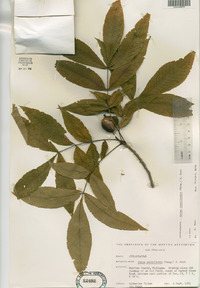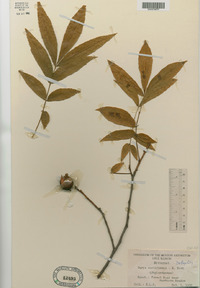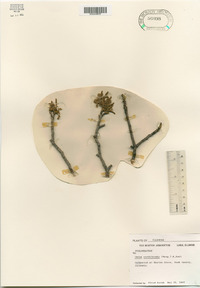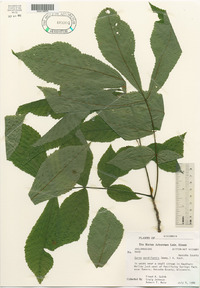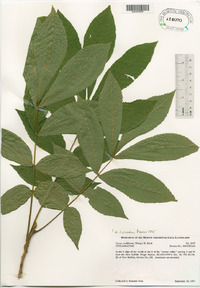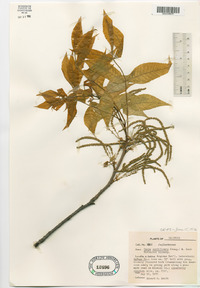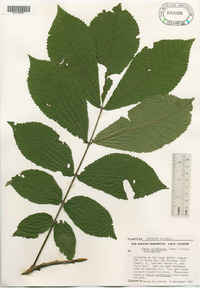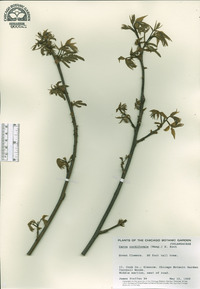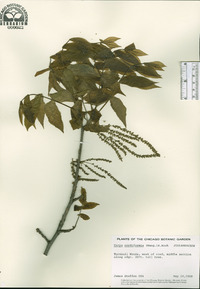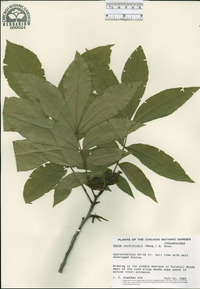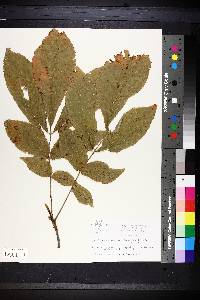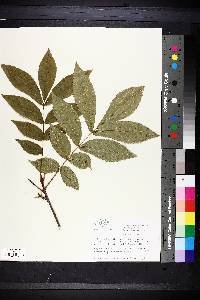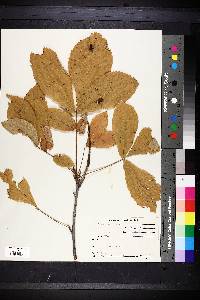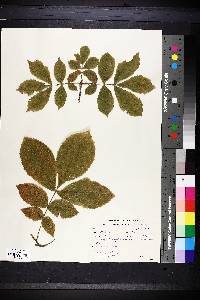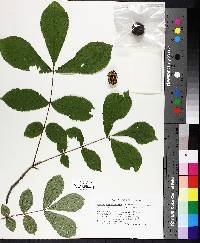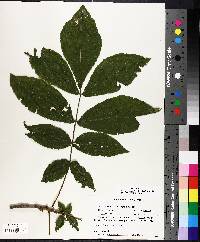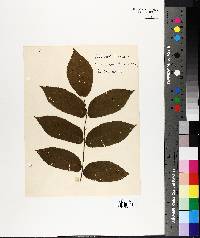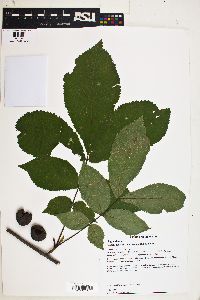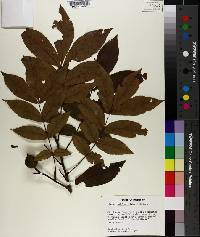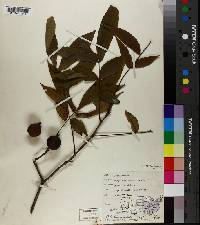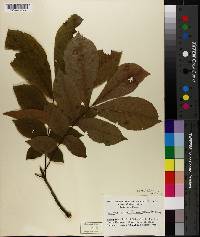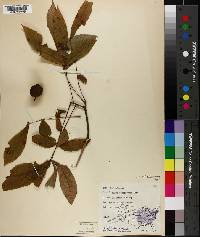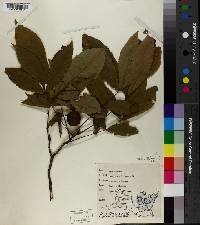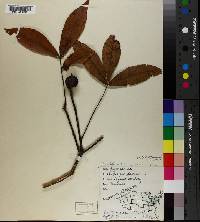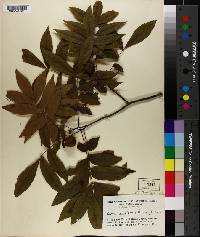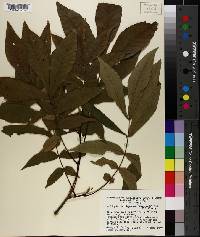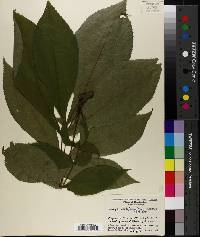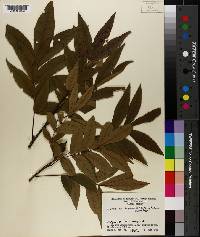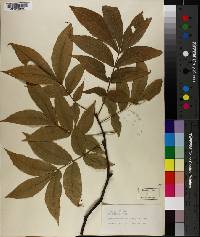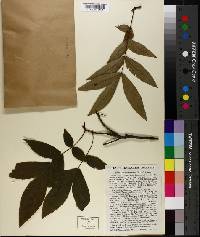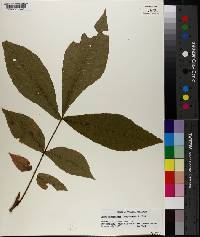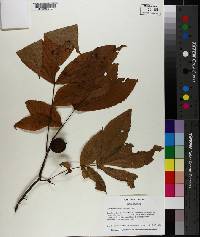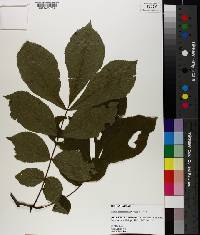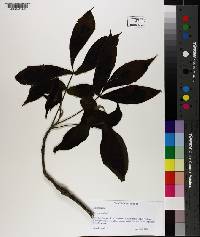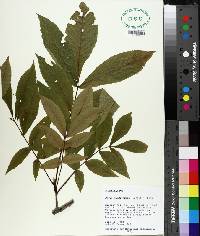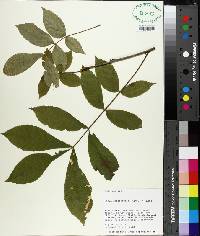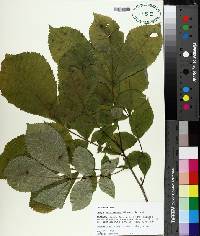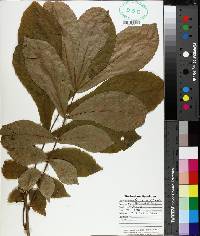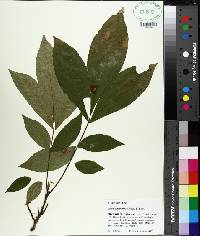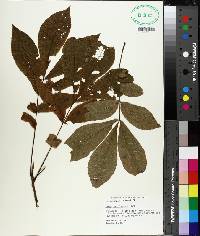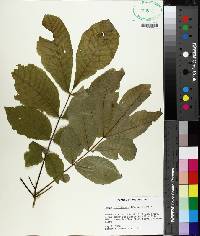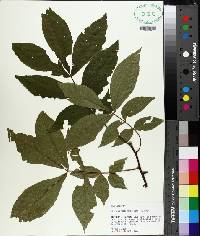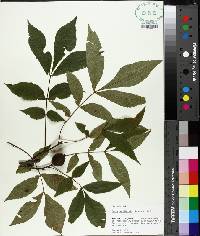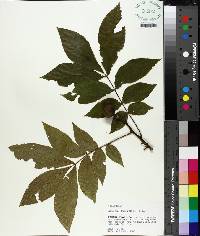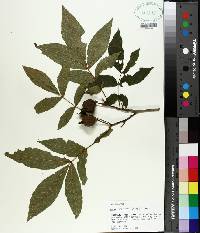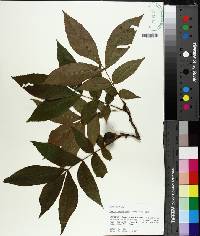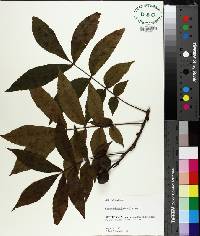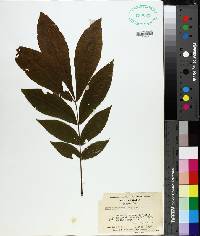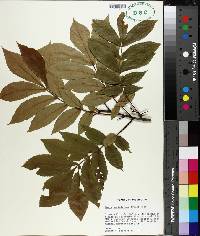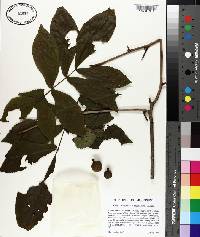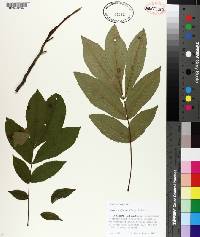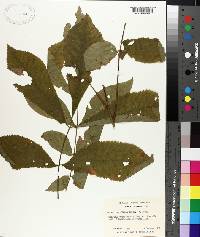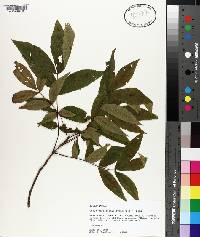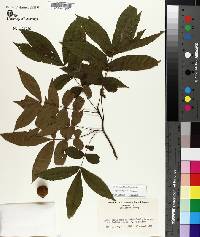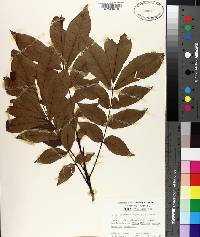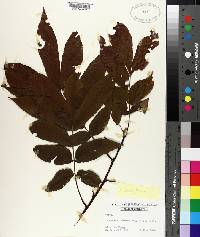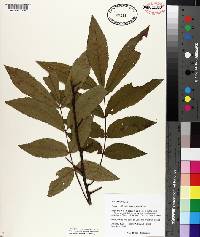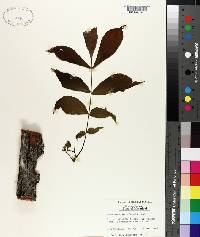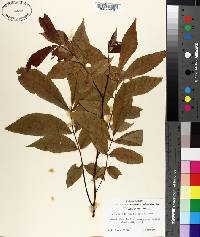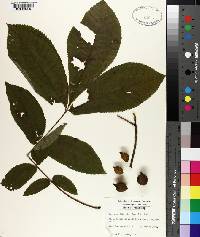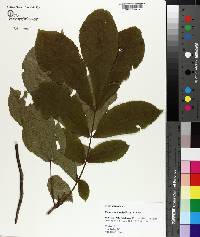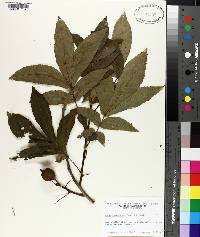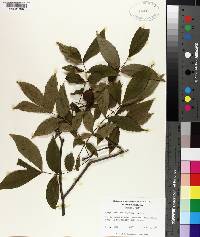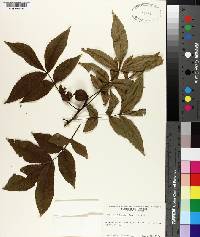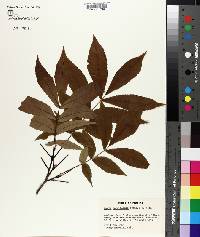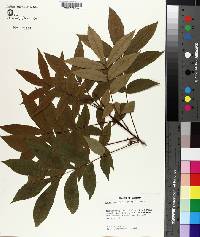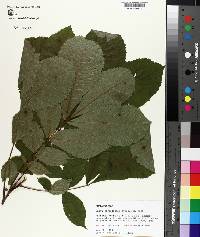Carya cordiformis
|
|
|
|
Family: Juglandaceae
Bitter-Nut Hickory, more...pignut, Yellow-Bud Hickory, bitternut hickory
[Carya minima (Britton) Britton, Stern & Poggenb., moreHicoria cordiformis (Wangenh.) Britton, Juglans amara] |
Trees , to 52 m. Bark gray or brownish, smooth or ridged or exfoliating with small platelike scales. Twigs tan, slender, glabrous except scaly near tip. Terminal buds sulfur yellow to tan, oblong, 10(-19) mm, densely scaly with yellow peltate scales, pilose near apex; bud scales valvate; axillary buds protected by pair of valvate bracteoles. Leaves 2-4 dm; petiole 3-7 cm, glabrous near base, hirsute near rachis. Leaflets (5-)7-9(-13), lateral petiolules 0-1 mm, terminal petiolules 2-8 mm; blades ovate-lanceolate, rarely falcate, 3-19 × 1-7 cm, margins finely to coarsely serrate, without tufts of hairs, apex acuminate; surfaces abaxially villous with unicellular and 2-4-rayed fasciculate hairs along midrib and major veins, densely to sparsely pubescent throughout, and with abundant large peltate scales and small round and 2- or 4-lobed peltate scales in spring, still present near margins at base and apex in fall, adaxially villous along midrib near base, sparsely scaly in spring. Staminate catkins pedunculate, to 16 cm, stalks without hairs or hirsute, bracts scaly; anthers hirsute. Fruits brown, cylindric, obovoid, or nearly spheric, not compressed or only slightly compressed, 2-3 × 2-3.2 cm; husks rough, 2-3 mm thick, dehiscing to middle or slightly below, sutures winged; nuts light brown, ellipsoid to ovoid, not compressed or only slightly compressed, not angled, rugulose; shells thin. Seeds bitter. 2 n = 32. Flowering spring. River flood plains, well-drained hillsides, and limestone glades; 0-900 m; Ont., Que.; Ala., Ark., Conn., Del., D.C., Fla., Ga., Ill., Ind., Iowa, Kans., Ky., La., Maine, Md., Mass., Mich., Minn., Miss., Mo., Nebr., N.H., N.J., N.Y., N.C., Ohio, Okla., Pa., R.I., S.C., Tenn., Tex., Vt., Va., W.Va., Wis. Carya cordiformis hybridizes with C . illinoinensis ( C . × brownii Sargent), C . ovata ( C . × laneyi Sargent), and C . laciniosa , and reputedly with the tetraploid C . glabra ( C . × demareei Palmer). The Fox Indians used Carya cordiformis medicinally as a diuretic, a laxative, and a panacea (D. E. Moerman 1986).
Tree 15 - 26 m tall, trunk 30 cm - 0.9 m in diameter Leaves: alternate, odd-pinnately compound, 15 - 40 cm long, with seven to nine leaflets. Flowers: either male or female, found on the same tree (monoecious). Male flowers are borne in clusters of three hanging catkins 8 - 16 cm long. Female flowers form in spikes of two to five about 1.3 cm long. Fruit: a nut surrounded by a husk, 2 - 3 cm long, 2 - 3.2 cm wide. The husk is thin, nearly spherical, covered with short yellow hairs, splitting to the center. The tiny nut is light brown and smooth. Bark: gray to brown, smooth, slowly developing shallow furrows. Twigs: changing from green to brown to gray, sparsely hairy when young. Terminal buds: sulfur-yellow, 1 - 2 cm long, appearing naked but with scales that do not overlap (valvate). Leaflets: bright green above, paler beneath, 7 - 15 cm long, 2 - 6.5 cm wide, lance-shaped, toothed, hairy-veined beneath. Leaves turn golden in fall. Foliage is aromatic when crushed. Lateral buds: smaller and four-angled. Similar species: Carya glabra can be distinguished from other hickories by its bark that remains tight except for a few shaggy strips, fairly smooth twigs, five to seven leaflets, pear-shaped to elliptical or spherical fruit with a husk that may split to the base, and small dome-shaped terminal buds.Carya laciniosa has shaggy bark, stout orangish tan twigs with orange lenticels, seven leaflets with soft hairs beneath, very large oblong to spherical and four- to six-ridged nuts with husks splitting to the base, and large terminal buds with slightly curling outer scales. Carya ovata differs by its shaggy bark, foliage that smells like apples when crushed, five leaflets fringed with tufts of hair along the margins, nearly spherical husks that separate from a four-ridged nut, and large terminal buds with slightly curling outer scales. Carya tomentosa has fissured bark, densely hairy and reddish brown twigs, seven to nine leaflets with hairs beneath, and husks that split to the middle or base to reveal four-ridged nuts. Flowering: mid May to early June Habitat and ecology: Common in mesic woods, along edges of streams, and on lower upland slopes. Occurence in the Chicago region: native Notes: Carya cordiformis wood is considered the best wood for making hickory smoked meats. The nuts are so bitter that most animals will not eat them. Etymology: Carya comes from the Greek name for walnut. Cordiformis comes from the Latin words meaning heart-shaped. Author: The Morton Arboretum Bark scaly; winter-buds bright orange- yellow; lfls mostly (5)7-9(11), the lateral lanceolate to lance-ovate or elliptic, the terminal commonly long-cuneate at base and sessile or nearly so; staminate catkins clustered just beneath the new growth on the wood of the previous year's twigs; fr obovoid to subglobose, often somewhat flattened, 2.5-3.5 cm, winged chiefly above the middle, splitting to about the middle; nut subglobose to obovoid, 1.5-3 cm, at least two-thirds as thick; obscurely angled, otherwise smooth, tipped with a slender, persistent point; kernel bitter; cotyledons bifid; 2n=32. Woods; s. Me. and sw. Que. to Minn. and e. Neb., s. to Fla. and Tex. C. جaneyi Sarg. is a hybrid with C. ovata. Gleason, Henry A. & Cronquist, Arthur J. 1991. Manual of vascular plants of northeastern United States and adjacent Canada. lxxv + 910 pp. ©The New York Botanical Garden. All rights reserved. Used by permission. From Flora of Indiana (1940) by Charles C. Deam An infrequent to frequent tree throughout the state. This species prefers a moist soil but will be found also on wooded slopes. The species is variable in the number and size of its leaflets. The usual number of leaflets is 5 or 7, but trees with 7 or 9 leaflets are frequent. The leaflets of the greater number of trees rarely exceed 3.5 cm in width but the lateral leaflets of some trees are more than twice as wide. Sargent calls the wide-leaflet form var. latifolia Sarg. He says the under surface of the leaflet is usually more pubescent. This is usually true but can not be used as a character to separate the two forms. In Indiana, the forms with wide leaflets are found in the southern half of the state, especially on the wooded slopes of the hill country. ...... Indiana Coefficient of Conservatism: C = 5 Wetland Indicator Status: FACU Deam (1932): This species is fast dying out throughout the central and in many of the northern counties. This is supposed to be caused by a root disease. Since this species is the least valuable of our hickories, its disappearance is not viewed with alarm. However, the same trouble appears to have killed some trees of the shagbark hickory in Fulton and a few other counties. The rossed bark of this species is preferred by manufacturers of split-bottomed chairs. |
|
|
|

